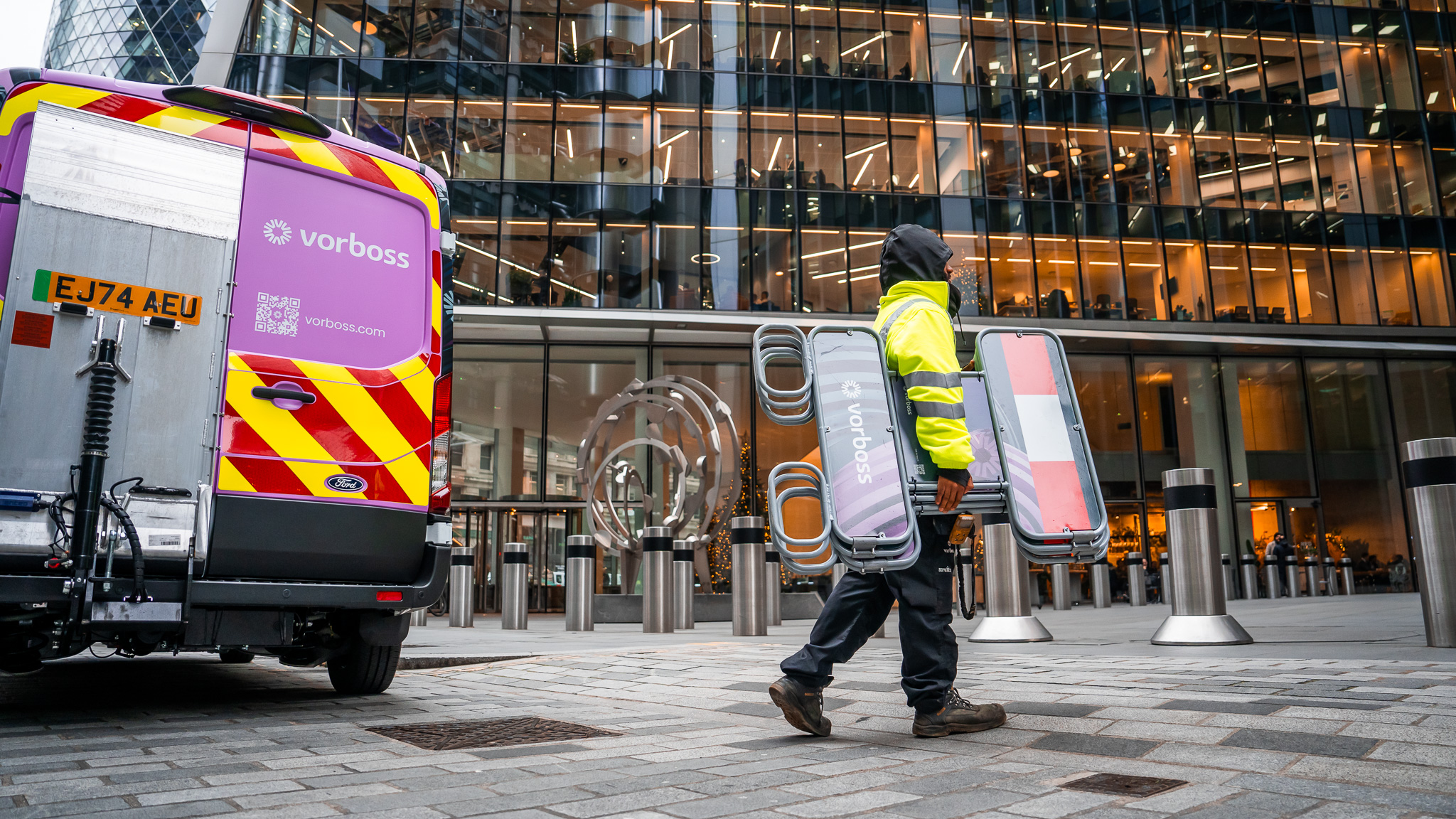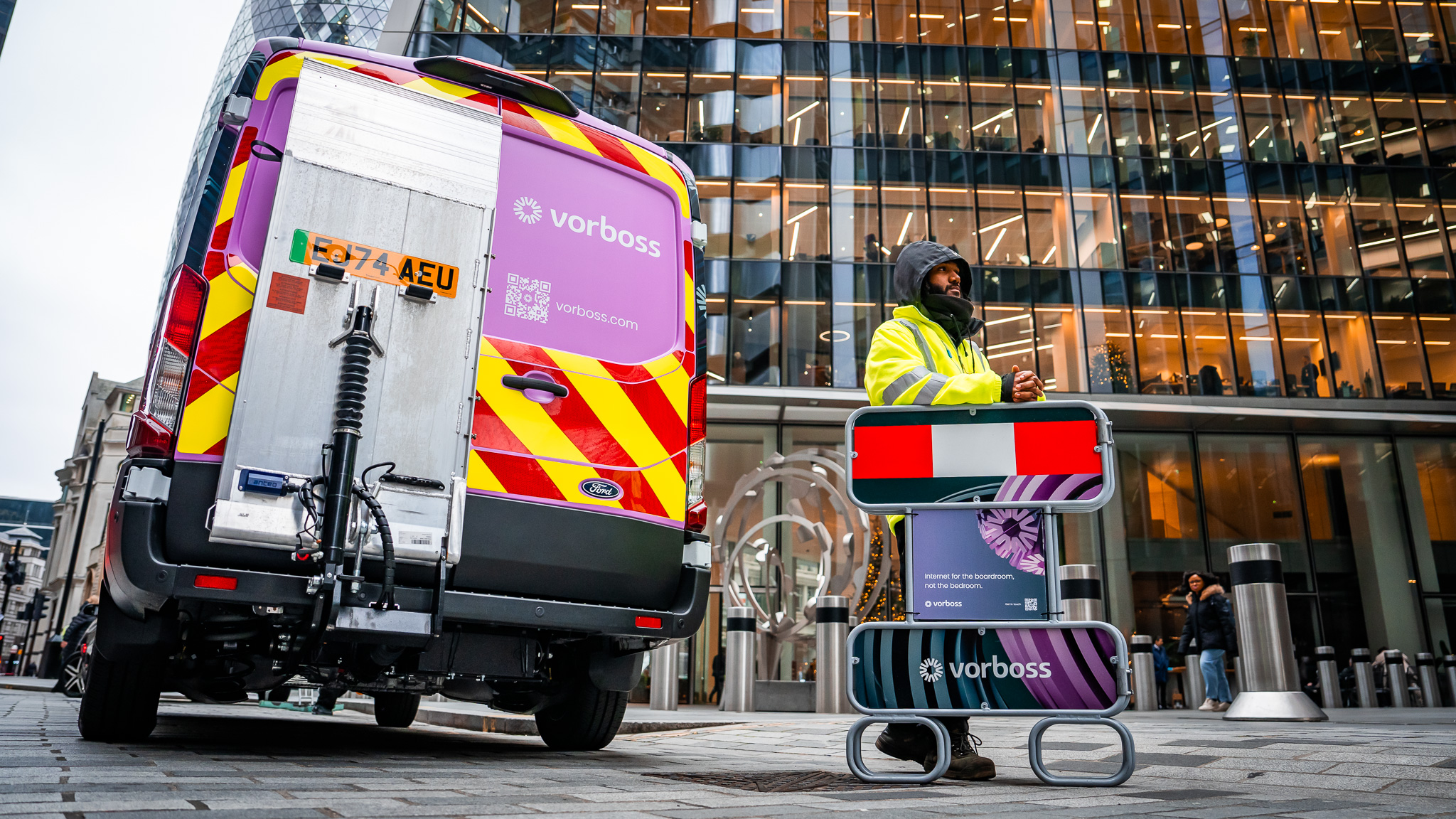The power of vertical integration: how Vorboss built London’s best business fibre network
May 23, 2023
|
5
min read

Highlights
Vorboss is vertically integrated, owning the entire value chain from fibre to service delivery. Our unconventional business model allows us to build a future-ready network with unprecedented capacity, flexibility, and reliability in Central London. We have in-house training and build custom software to enhance efficiency, agility, and customer experience.
At Vorboss, we have completely transformed business connectivity in London. By building a vertically integrated organisation, we have created a dedicated business fibre network that is driving London towards 10Gbps as a standard, a change that businesses desperately need.
Our innovative business model has allowed us to build a network with significantly more capacity—we start where others top out, connecting customers up to 100Gbps at market-leading rates. We also get customers connected much faster than the current industry standard, setting us apart.
Why did we throw out the traditional telecoms playbook? So we could redefine what's possible for London's underserved businesses. The Vorboss way isn't just a different way—it's a better way, and this is how we did it.
Building a disruptive business model

Building London's best full-coverage business fibre network was no small feat. 70% of the UK's connectivity demands are in Central London, but an ageing incumbent internet operator serves 80% of that market. It can't meet the needs of modern businesses, which is why we came in and built our network with the latest technology and newest design.
We built a future ready network that serves ambitious businesses. To date, we've deployed over 500 km of network in three years—a scale no other fibre company has taken on in Central London, especially in such a short amount of time.
We achieved this through vertical integration; by owning the entire value chain from fibre to service delivery, we have complete control over the quality and build of our network. We offer our customers the highest levels of reliability and flexibility, which isn’t possible with a traditional telecoms model.
Putting customers first
Unlike most telcos, we started by thinking about customers’ needs and worked backwards. A laser focus on market-leading bandwidth, capacity, and delivery has resulted in unassailable products for London's enterprises.
Vorboss is the only vertically integrated Internet Service Provider (ISP) dedicated to business in London. Our people-focused operational model maximises efficiency and delivers an outstanding customer experience.
Powering an unconventional model

Our belief that people come first and assets second led us to create an unconventional model for powering our network.
Creating a motivated workforce
To be truly vertically integrated, we had to start with our workforce. We created a certified training academy that takes people with zero telecoms experience and qualifies them to build our network. We are one of only a few UK ISPs that do all their training in-house; while it may not be the easy option, it is the only way to deliver the quality standard necessary for our ambitious customers.
Keeping our training in-house allows us to build diversity and inclusion into our team, addressing the industry's significant diversity problem from the ground up. By looking at real-life people rather than numbers, we have created a team that is engaged, motivated, and willing to think differently to solve problems for customers. This approach makes good business sense, but it's also the right thing to do; future decision-makers will want to buy from companies that share their values.
From planning to customer support, it is an exceptional customer experience from end-to-end. Our customers will only ever speak to members of the Vorboss team, not contractors.
Moving people and assets separately

Many of our employees are young Londoners who rely on public transportation to get around the city. Rather than limiting our talent pool to those who can drive, we developed a system where we separated personnel and resources.
Our model enables Installation Technicians to travel to site via public transportation. We hire professional drivers to transport tools and equipment to workers in the field. This separation allows our teams to deliver a better product by moving faster and working more efficiently.
Building our own software
Early on, we saw that we needed more than off-the-shelf software solutions to power our innovative model. We have assembled a team of 25 Software Developers (and growing), led by our Chief Information Officer, so we can move at speed and build customer-facing products that are fit for purpose.
Our Software team has built a data management platform that sees the relationships between all business data. They build tools to aid deployment and network operation; for example, they developed a tool that finds all customers affected by a given fault. Using low-code prototypes, business problems are solved in minutes rather than hours.
By having a dedicated Software team working on our core business functionality, we increase yield for the rest of the business. This allows us to operate with agility, build solutions that our customers need, and make strategic decisions based on real-time data.
Setting a new standard

Our organisation is made for change. Our network will accommodate the evolving economic climate, as well as the growing needs of our customers, to secure London’s position in the global economy.
After growing a workforce of around 400 and building the ability to connect over 120,000 businesses in Central London, we can safely say that our model works. Backed by the Fern Trading Group, which is advised by Octopus Investments, our fresh approach and extensive premium network, combined with a team that reflects the communities it serves, has made us the best and largest business-only fibre network in Central London.
If you would like to learn more about getting connected with us, speak to one of our experts today.
Tell us about yourself so we can serve you best.
Got a question?
More articles

For many landlords and building managers, the word “wayleave” feels like the responsible route whenever a fibre circuit is being installed on their property. It sounds formal and safe – a neat legal box to tick.
In many cases, however, a wayleave adds unnecessary complexity and delays, frustrates tenants, and can expose landlords to long-term legal risks.
At Vorboss, we’ve connected thousands of office spaces across London without a wayleave, keeping landlords in full control and getting tenants online faster.

What is a wayleave?
A wayleave is a written agreement between a landowner and a telecoms operator. It gives the operator permission to install and keep equipment on private property.
What many people don’t realise is that signing a wayleave also activates “Code rights” under the Electronic Communications Code. These rights go beyond simple permission, they give the operator legal powers to stay on the property indefinitely, access it when needed, and even refuse removal of their equipment in certain situations.
For a typical connection into a commercial building in London, a wayleave can make the fibre installation process slower, more expensive, and limit the landlord’s flexibility long term.
Why a wayleave isn’t required for standard in-building fibre connections
For a standard in-building fibre connection serving a tenant, a wayleave isn’t a legal requirement. Important protections, like building access, fire safety, repairing any damage, and removing equipment, are already covered by the tenant’s lease and usual building rules.
If no wayleave is signed, no Code rights are triggered, meaning the landlord retains full control and the installation exists under a simple, fully revocable licence.
In practice, this gives landlords far more protection and flexibility:
- No legal lock-in – the telecoms operator has no long-term rights to stay or refuse removal.
- Landlords keep full control – equipment can be moved or removed when the building changes.
- Faster fibre installation – no time lost in drafting contracts or solicitor reviews.
- Happier tenants – connections go live quicker; tenants get to move in faster.
By contrast, signing a wayleave and granting Code rights introduces a complex and expensive legal process for any fibre removal or relocation. This can take at least 18 months, plus potential court or tribunal proceedings, making it slower, and far less flexible for the landlord.

Public services across central London are evolving, and the City of London Corporation is leading the way.
Whether you work, live or study in the Square Mile, you’ll soon feel the difference that faster, more dependable connectivity brings.

What is the Future Network Programme?
The City of London Corporation is rolling out the Future Network Programme, a major project to modernise its entire digital infrastructure and bring everything under one unified network.
From offices and schools to iconic green spaces like Hampstead Heath, cultural destinations like the Barbican, and historic markets such as Leadenhall and Old Spitalfields, this upgrade will mean more reliable connectivity across the City’s buildings and public spaces.
It also extends to essential services, including critical sites run by the City of London Police. This enhanced connectivity will support everything from secure communication systems to faster, more resilient networks for emergency operations.
Leading this transformation is Roc Technologies, supported by Juniper Networks and Palo Alto Networks; all powered by the Vorboss fibre network. Together, we’re bringing the City onto a modern digital foundation that’s ready to support its future.
Who the Future Network Programme benefits and how?
The programme is designed for everyone who depends on public services in the Square Mile:
- Students in City-run schools will have fast, reliable connectivity to fully access digital learning tools.
- Public-sector teams will experience smoother hybrid working, better access to online platforms, and more efficient collaboration across locations.
- Residents and visitors will see improvements in public Wi-Fi, digital services, and online access in libraries, community hubs, and other shared spaces.
- The City of London Police will gain a more secure, faster and resilient network that enhances CCTV reliability and enables more effective frontline operations.

.avif)

.avif)

